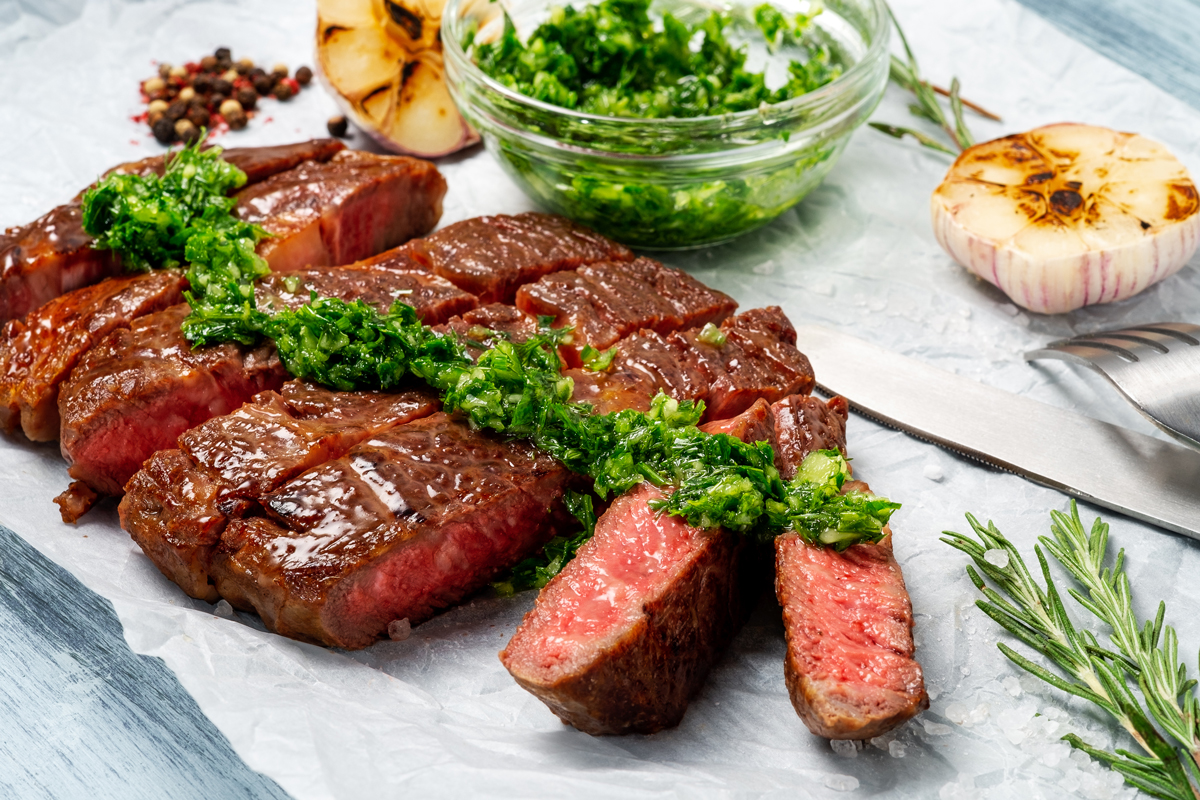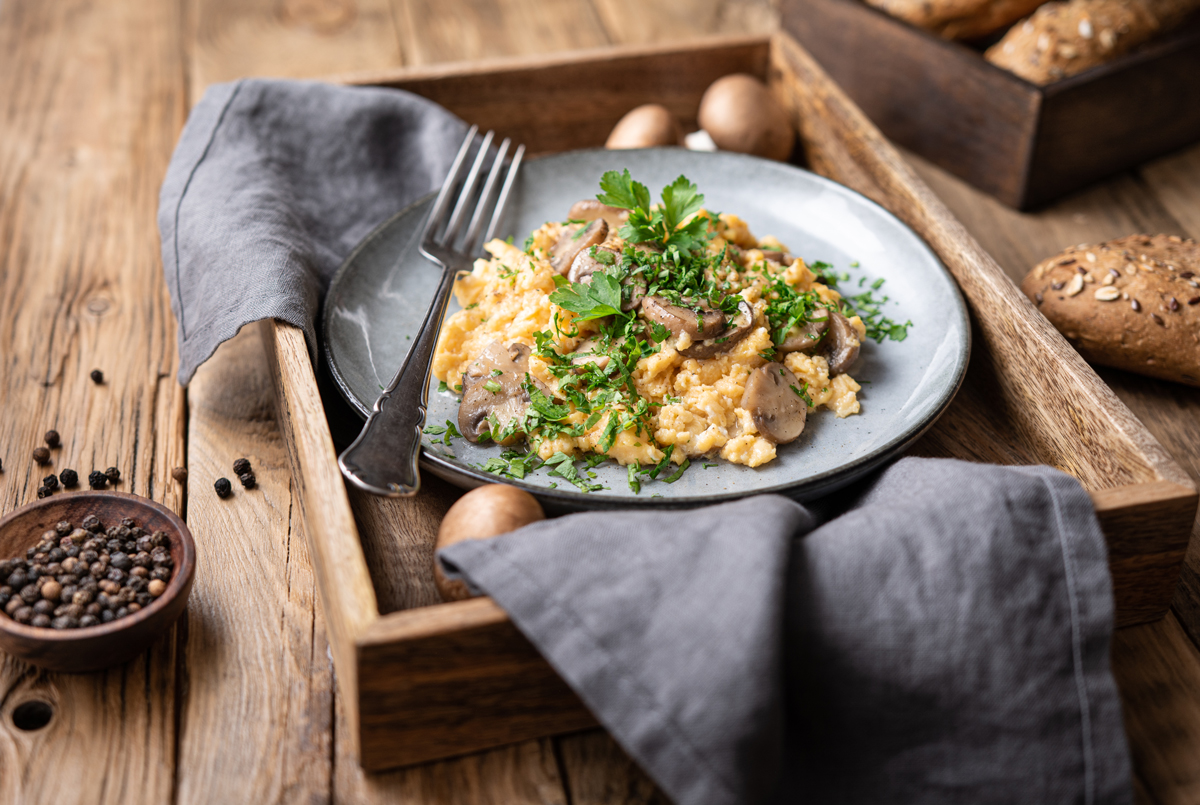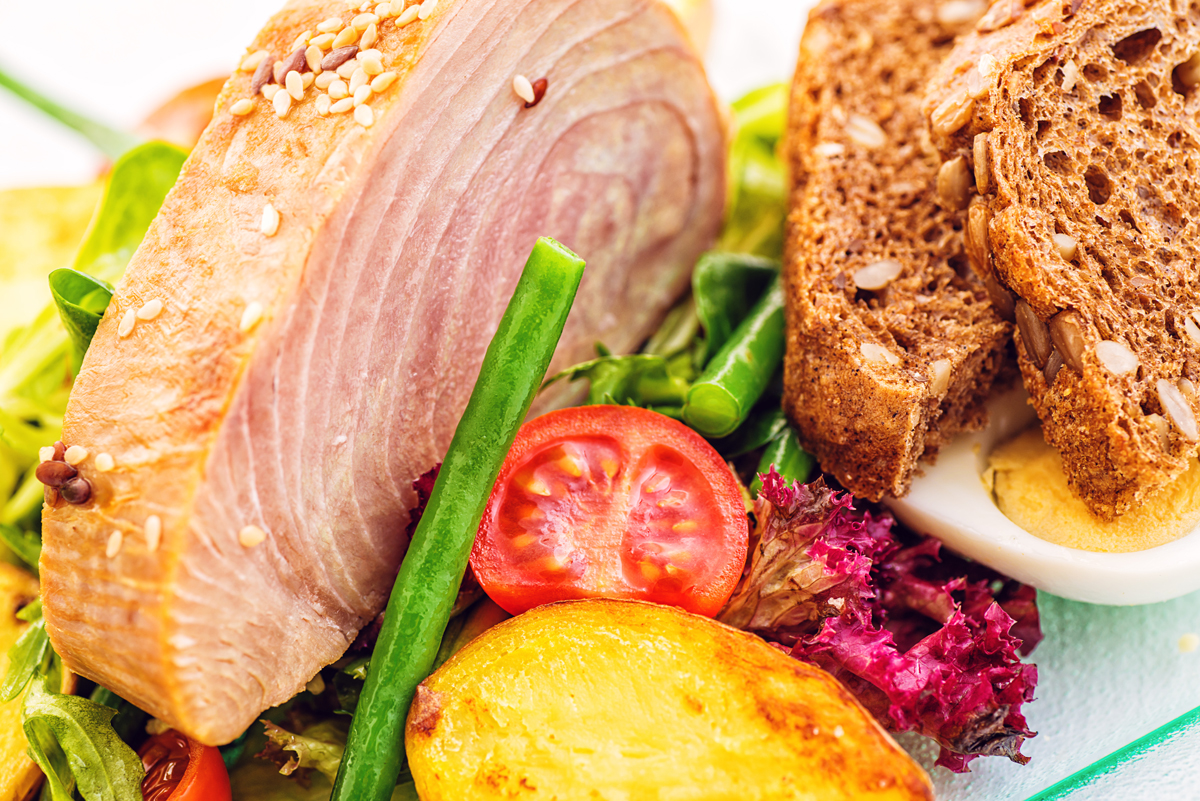Called chuletón in Spanish, these rib-eyes can be cooked indoors or out. To get more mileage (aka servings) from the steaks, thinly slice them on a diagonal after cooking and shingle on a large platter with the chimichurri sauce.
Ingredients
For the chimichurri marinade/sauce:
- 2/3 cup fresh cilantro, loosely packed
- 1 cup fresh flat-leaf parsley, loosely packed
- 1/4 cup red wine vinegar
- 5 garlic cloves, peeled
- 1 teaspoon dried oregano
- 1 teaspoon coarse salt (kosher or sea)
- 1/4 teaspoon hot red pepper flakes
- 1 small onion, finely chopped
- 1/4 cup water
- 1/4 cup extra virgin olive oil
For the chimichurri marinade/sauce:
- Two 8- to 10-ounce rib-eyes, each at least 1 inch thick
- 1 to 2 tablespoons extra virgin olive oil
- Coarse salt (kosher or sea)
- Freshly ground black pepper
Directions
Step 1
Combine all the ingredients for the marinade/sauce in a medium bowl and whisk to mix. Set aside half the marinade for serving. Place the steaks in a sturdy resealable bag or in a baking dish large enough to hold them and pour the remaining half of the marinade over them. Marinate the steaks for 30 minutes to 1 hour. Remove the steaks from the marinade and scrape off any excess. Season on both sides with salt and pepper.
Step 2
Heat a large cast-iron skillet or plancha (a Spanish griddle) on the stovetop over medium-high heat. Add 1 to 2 tablespoons of olive oil. Add the steaks to the pan and cook, turning once or twice with tongs, until done to your liking, 3 to 4 minutes per side. Alternatively, cook the steaks on an outdoor grill, either charcoal or gas. (Note: Really thick steaks can be browned in the frying pan or on the plancha, then transferred to a 400°F oven to finish cooking.) Transfer the steaks to a platter or plates. Serve with the reserved chimichurri sauce.
Serves 2 generously — Recipe courtesy of the Fresh-Pressed Olive Oil Club




